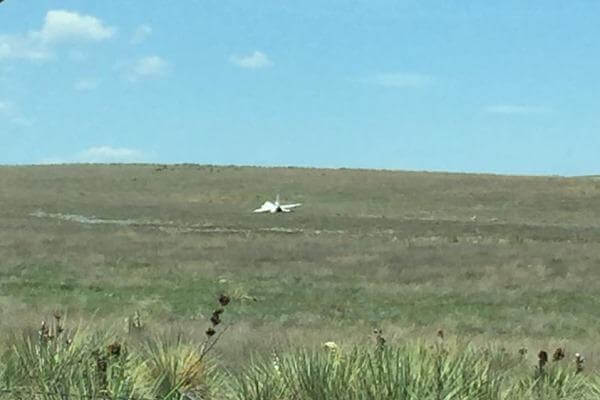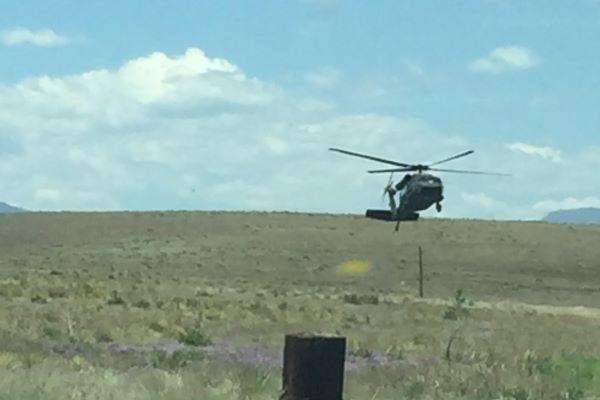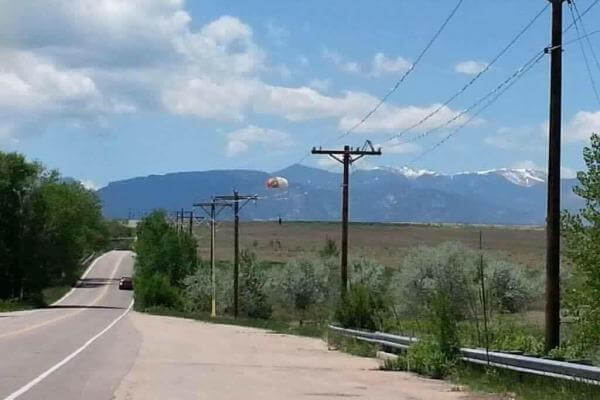An accidental throttle rotation led to a malfunction and subsequent engine stall that contributed to an Air Force Thunderbirds jet crash after a flyover at the U.S. Air Force Academy graduation on June 2, according to a new report.
The F-16CM, piloted by Maj. Alex Turner, was returning to Peterson Air Force Base, Colorado, after the graduation flyover -- attended by President Barack Obama -- when it crashed in a nearby field.
Turner, of the the 57th Wing at Nellis Air Force Base, Nevada, was flying the Thunderbirds No. 6 jet in the demonstration team's six-ship formation.
"After beginning landing procedures, the pilot inadvertently rotated the throttle, placing it into an engine cut-off position. Normally, this full rotation cannot occur unless a throttle trigger is affirmatively actuated or pressed," states an Air Combat Command Accident Investigation Board report released Wednesday.
The throttle trigger became stuck in the position, due to "debris accumulation in the throttle trigger, combined with wear on the trigger assembly," the report said. Without the throttle, the engine cut off and immediately lost thrust, it said.
Maj. A.J. Schrag, a spokesman for the command, described the debris build-up as a "maintenance issue."
While a preflight inspection of the aircraft occurred two days before the flight and didn't raise any red flags, the throttle trigger sticking "has happened before," he said. The service is reviewing a possible update to maintenance procedures -- as it stands now, pilots aren't instructed to swab the trigger before each flight -- and considering a hardware or mechanical change in the future, he said.
As the pilot descended, Turner attempted to restart the engine, but officials said it was "impossible" at such a low altitude.
Air Combat Command on Wednesday tweeted: "Fuel levels were not ID'd as a cause or contributing factor." Analysts and aviation enthusiasts previously speculated Turner had simply run out of gas.
"The aircraft had 900 lbs. of fuel at the time of the mishap," ACC said. The F-16 can hold 7,000 pounds of jet fuel; the Thunderbirds' F-16s are considered to be "clean jets," without the capacity to carry missiles or bombs, and harboring only an internal fuel system, according to the Air Force.
Turner brought the plane down into an unpopulated field, delaying his ejection. When he did eject, he sustained minor injuries. He was recovered by local first responders.
The loss of the aircraft cost $29 million, with no additional damage to civilian property.
Turner met Obama, who gave the commencement speech at the graduation, shortly after the mishap.
"The pilot seemed in fine form, saluted POTUS as he approached and then shook his outstretched hand. The two had a brief chat," according to a White House press pool report at the time.
"The president thanked the pilot for his service to the country and expressed his relief that the pilot was not seriously injured. The president also thanked the first responders who acted quickly to tend to the pilot," the press report said.
Turner had more than 1,200 hours flying the F-16 and a total flight time of 1,447 hours, according to the Thunderbirds' website. He resumed flying with the team shortly after the incident, the report said.
The investigation's release comes two months after the Navy released its investigation into the Blue Angels crash, which occurred on the same day. Marine Capt. Jeff Kuss died in the F/A-18 Hornet crash.
The Navy's investigation found the crash was the result of pilot error, an improper transition from a climb maneuver during pre-air show training.
-- Oriana Pawlyk can be reached at oriana.pawlyk@military.com. Follow her on Twitter at @Oriana0214.






























